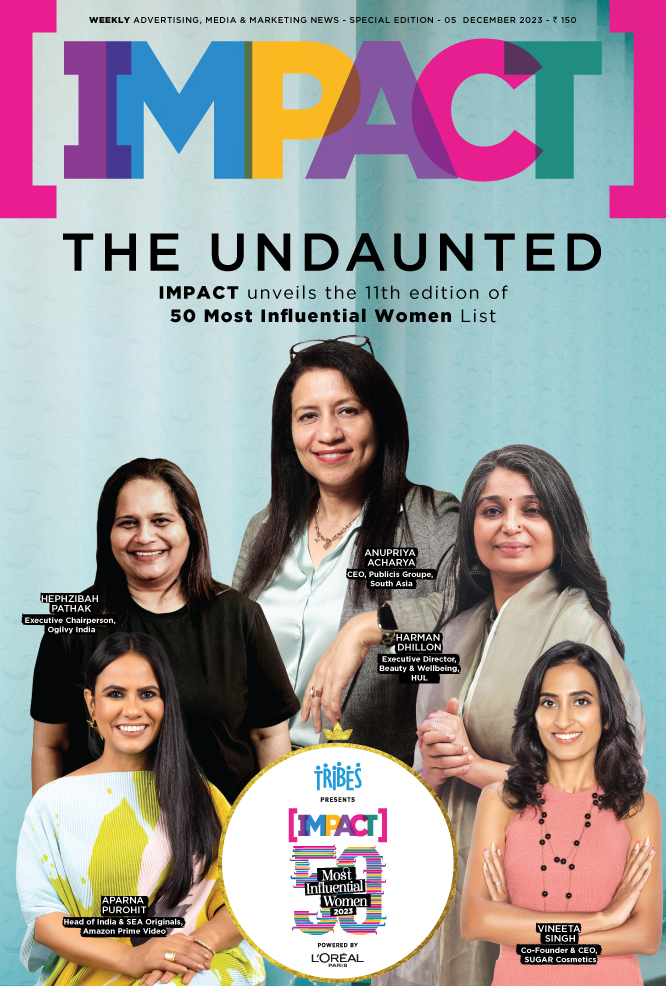Big legacy brands in India are quietly flexing a new kind of digital muscle, one that exists beyond their main corporate websites or ecommerce storefronts. From Emami to Raymond Group, several traditional giants are now building individual, standalone direct-to-consumer (D2C) sites for their hero products. On the surface, it might seem like a minor structural change, but behind these spin-offs lies a significant marketing pivot, one that allows heritage brands to control storytelling, collect first-party data, and engage with consumers more intimately than ever before.
For years, corporate sites served as vast online portfolios: informative but generic. The new D2C strategy flips that model. Instead of crowding dozens of sub-brands under a single digital roof, companies are now creating niche microsites dedicated to their most iconic products. These platforms don’t just list products, they’re immersive brand environments, equal parts experience, education, and commerce. They allow brands to tell richer stories, drive direct engagement, and experiment with offers or innovations without disrupting the larger ecosystem.
Take Emami, for instance. While its master site still hosts the full brand portfolio, products like Zandu Balm, Boroplus, and Kesh King now have dedicated D2C platforms, each with a distinct digital identity. On these sites, consumers don’t just shop; they experience. Zandu’s website, for instance, leans heavily into Ayurveda and holistic wellness, while Kesh King mirrors the language of new-age beauty brands. “The D2C offering is fully integrated with our main umbrella brand. Rather than being separate, it serves as an additional channel where certain products are exclusively available online. The primary goal of launching a dedicated D2C website was to enhance consumer engagement, offering faster access to products, personalised benefits, and quicker query resolution. This approach also caters to a growing segment of ‘online-only’ consumers who seek a broader product range. By selling directly, we can offer an expanded portfolio without the typical challenges of traditional distribution—such as extended supply chains, widespread inventory management, and concerns about product freshness,” says Nalin Sood, Head - Digital Ecosystem, Healthcare Business, Emami Ltd.
“The D2C offering is fully integrated with our main umbrella brand. Rather than being separate, it serves as an additional channel where certain products are exclusively available online. The primary goal of launching a dedicated D2C website was to enhance consumer engagement, offering faster access to products, personalised benefits, and quicker query resolution. This approach also caters to a growing segment of ‘online-only’ consumers who seek a broader product range. By selling directly, we can offer an expanded portfolio without the typical challenges of traditional distribution—such as extended supply chains, widespread inventory management, and concerns about product freshness,” says Nalin Sood, Head - Digital Ecosystem, Healthcare Business, Emami Ltd.
He adds that while both roles cater to a digitally savvy audience, the key difference lies in how products are prioritised across channels based on consumer behaviour and channel dynamics.
“The D2C website is more than just a sales platform, it’s a strategic marketing channel offering the full product portfolio and rich brand information. Unlike other channels, D2C provides access to first-party data and serves as a testbed for consumer research, concept validation, packaging, and communication testing. However, product focus on D2C varies, as lower-priced items may not be economically viable due to higher selling costs and are therefore less prioritised. The D2C channel also uniquely offers full access to first-party data and serves as a platform for pre- and post-launch consumer research, enabling testing of concepts, packaging, and communication, capabilities not available on other channels,” Sood highlights.
While these separate D2C sites exist, a closer look reveals a disparity in their operational effectiveness. Only Zandu Care appears to be functioning effectively, offering a full range of products readily available for purchase. In stark contrast, the Boroplus and Kesh King D2C websites consistently display ‘sold out’ messages across their entire product inventories. This suggests either a deliberate strategy to drive traffic to other retail channels, or, more likely, a significant challenge in managing stock and fulfillment for these particular direct-to-consumer ventures. It highlights the complexities of establishing and maintaining a successful D2C presence, even for established brands with strong market recognition.
Hindustan Unilever has taken a similar route. Dove, Lux, Lifebuoy, Horlicks and other iconic names now boast their own websites, each styled differently, reflecting the persona of the brand. Dove’s site is centered around self-care and skin positivity. Horlicks focuses on family nutrition and science-backed benefits. By isolating these brands in dedicated digital spaces, HUL ensures each product line can craft its own distinct tone, voice, and user experience, without the constraints of a corporate template.
While distinct microsites exist for each product line, they primarily function as informational and engagement hubs rather than full-fledged commerce platforms. Purchase transactions are routed to the respective e-commerce sites, creating a cohesive and secure buying journey without fragmenting the customer experience. In the fashion space, Raymond takes a similar approach. Its master brand maintains a strong digital presence, complemented by standalone sites for ColorPlus and Park Avenue. This setup enables focused storytelling, curated product showcases, seasonal drops, and sharper demographic targeting, while still centralising transactions for efficiency and consistency. Ravi Hudda, Group Chief Digital & Information Officer, Raymond Group, highlights, “At Raymond, our decision to create dedicated D2C sites stems from a clear intent: to offer focused brand storytelling, curated product experiences, and deeper customer engagement. Each product line, be it Raymond, ColorPlus, Parx, or Park Avenue, carries a unique identity and customer journey. A standalone D2C platform allows us to craft immersive, purpose-driven experiences that go beyond the transactional, something a unified umbrella site may dilute.”
Ravi Hudda, Group Chief Digital & Information Officer, Raymond Group, highlights, “At Raymond, our decision to create dedicated D2C sites stems from a clear intent: to offer focused brand storytelling, curated product experiences, and deeper customer engagement. Each product line, be it Raymond, ColorPlus, Parx, or Park Avenue, carries a unique identity and customer journey. A standalone D2C platform allows us to craft immersive, purpose-driven experiences that go beyond the transactional, something a unified umbrella site may dilute.”
He further adds that while third-party platforms serve the purpose of scale and reach, separate D2C channels are built for depth and relationship. “On our own platforms, we control the narrative, personalise journeys using AI, and unlock full-funnel insights across discovery, conversion, and loyalty. This helps us test new propositions faster and deliver premium, brand-consistent experiences that third-party platforms can’t always replicate. It’s a strategic trifecta. Sales potential gives us commercial viability, first-party data fuels our AI-led personalization engine, and consumer engagement builds long-term brand equity. Our AI stack enables this balance, powering cohort-based pricing, real-time recommendations, and behavior-driven campaigns, so we grow revenues while nurturing deeper consumer relationships,” Hudda explains.
While ColorPlus and Park Avenue maintain their own distinct websites, all purchase transactions are seamlessly directed to the main Raymond website for completion. This integration ensures a unified and streamlined checkout experience for customers across all three brands.
Following Raymond’s integrated approach, DS Group offers a similar, albeit distinct, direct-to-consumer (D2C) strategy. While brands like Catch spices and Rajnigandha pan masala maintain individual brand websites, a click to purchase on either site seamlessly redirects the customer to R-Club. This centralised D2C platform, R-Club, acts as the singular e-commerce destination for all DS Group products, streamlining the buying journey from brand discovery to final transaction. Customers can browse, add items from various DS Group brands to their cart, and complete their purchase within this unified R-Club environment, enhancing convenience and brand loyalty.
 NR Group, best known for Cycle Pure Agarbattis, has dedicated portals for both Cycle and Iris. The latter, a premium home fragrance offering, is positioned closer to lifestyle and décor, something the parent brand’s main site doesn’t highlight in the same way. Arjun Ranga, Managing Director, NR Group, says, “The decision to create distinct D2C platforms stems from our desire to foster discovery-led experiences for consumers. Legacy brands often face the challenge of balancing heritage with innovation, and having dedicated spaces for different product lines allows us to introduce new offerings organically and with focused attention. Rather than overwhelming consumers with an expansive catalog under one umbrella, these D2C sites serve as exploratory hubs where customers can engage with products tailored to their specific interests. This approach enables seamless product trials, direct interaction with evolving concepts, and an efficient mechanism for gathering consumer insights.”
NR Group, best known for Cycle Pure Agarbattis, has dedicated portals for both Cycle and Iris. The latter, a premium home fragrance offering, is positioned closer to lifestyle and décor, something the parent brand’s main site doesn’t highlight in the same way. Arjun Ranga, Managing Director, NR Group, says, “The decision to create distinct D2C platforms stems from our desire to foster discovery-led experiences for consumers. Legacy brands often face the challenge of balancing heritage with innovation, and having dedicated spaces for different product lines allows us to introduce new offerings organically and with focused attention. Rather than overwhelming consumers with an expansive catalog under one umbrella, these D2C sites serve as exploratory hubs where customers can engage with products tailored to their specific interests. This approach enables seamless product trials, direct interaction with evolving concepts, and an efficient mechanism for gathering consumer insights.”
He adds that the D2C approach is primarily driven by discovery and engagement, with convenience serving as the foundation. Traditional retail and quick-commerce platforms focus on immediate needs, products consumers already know and trust. D2C enables a more experiential approach, where customers can explore new offerings, interact with innovative concepts, and gain direct access to products before they become mainstream. Convenience manifests through intuitive navigation, tailored recommendations, and strategic promotional offers designed to reduce hesitation around trying something new. While marketplaces help scale established products, the D2C sites allow one to test, refine, and nurture emerging ideas through direct consumer participation and feedback.
So what’s driving this decentralised D2C move? For one, it allows each product line to behave like a focused startup, agile, expressive, and closer to consumers. These individual websites help brands build first-party data, fine-tune messaging, and experiment with limited-edition products or offers without affecting the broader supply chain or brand hierarchy. Unlike large ecommerce platforms where brands compete for attention, a dedicated D2C site ensures full ownership of consumer experience and visibility. Shradha Agarwal, Co-Founder and Global CEO of Grapes Worldwide, highlights, “For legacy brands, like Mankind Pharma or DS Group, these groups have already created their brand website long ago. These groups have brands that, over time, have become power brands in themselves. Their branding, identity, everything is different, so they all started making different websites. They realised that there is a huge requirement of having their own D2C channel where people can go and buy.”
Shradha Agarwal, Co-Founder and Global CEO of Grapes Worldwide, highlights, “For legacy brands, like Mankind Pharma or DS Group, these groups have already created their brand website long ago. These groups have brands that, over time, have become power brands in themselves. Their branding, identity, everything is different, so they all started making different websites. They realised that there is a huge requirement of having their own D2C channel where people can go and buy.”
However, Shradha points out that because of this model, the requirement for IT infrastructure will increase significantly. “Applications like Shopify or similar will charge separately for 10 different platforms, Google will charge separately to drive domain authority for these 10 websites, there will be challenges of cross-selling, etc,” she adds. It also gives legacy brands the chance to compete with digital-native upstarts on their own terms. With young consumers increasingly favouring brands that feel personal, authentic, and direct, these microsites offer a way to replicate that intimacy.
It also gives legacy brands the chance to compete with digital-native upstarts on their own terms. With young consumers increasingly favouring brands that feel personal, authentic, and direct, these microsites offer a way to replicate that intimacy.
Ravi highlights that D2C consumers are more intent-driven and loyalty-prone, often seeking exclusive collections, personalised bundles, and early access; things marketplaces rarely offer. Discounts are more strategic than universal, driven by data signals like cart behavior, cohort sensitivity, and lifecycle stage, not just price wars.
“We maintain price parity across channels post-discount, but D2C typically sees a higher average order value. It allows for flexible virtual combos and resonates more with loyal, high-frequency users and consumers who prioritize product authenticity,” Nalin adds.
Arjun says, “D2C shoppers are typically explorers, they seek depth of choice, value exclusive experiences, and engage with the storytelling behind a brand’s evolution. These consumers are more receptive to new launches and often willing to experiment with emerging product lines that may not yet be widely available through traditional retail channels. On marketplaces and quick-commerce platforms, buying behavior tends to be faster and utility-driven. Customers are looking for familiar products with minimal friction in their purchase decisions. We offer exclusive launches on the D2C platform, fostering trials and consumer feedback that help us gather rich data and build consumer engagement over a longer period.”
There’s also the matter of positioning. In crowded marketplaces, legacy brands risk being perceived as generic or old-school. A standalone D2C site gives them room to refresh the narrative, reframing traditional products for modern audiences without losing heritage. It’s a brand refresh without needing a rebrand.
Ultimately, this is not about abandoning traditional channels, but enhancing the digital footprint with more precision and intent. In spinning off their heroes into their own digital homes, legacy companies are asserting that these brands aren’t just SKUs, they’re experiences, communities, and evolving ecosystems in their own right. And that evolution, increasingly, begins online.
E - PAPER
Decentralising D2C
Legacy brands such as Emami & DS Group are creating standalone D2C sites for hero products, signalling a major shift in data, engagement & exclusivity
 BY
Anushka Sengupta
BY
Anushka Sengupta
Published: Nov 17, 2025 10:51 AM

RELATED STORY VIEW MORE
TOP STORY

Ads in Focus
Which campaigns nailed creativity this week? Here’s IMPACT’s curated selection of standout ads
NEWS LETTER
Subscribe for our news letter
Subscribe To Impact Online
IMPACT SPECIAL ISSUES

Suniel shetty takes the Spotlight
Miked Up for Goafest
Get Set Goaaa!
Anupriya Acharya Tops the IMPACT 50 Most Influenti
Advertising Turbocharged
A Toast to creativity
GOAing towards tech-lead creativity
REDISCOVERING ONESELF
50 MOST INFLUENTIAL WOMEN LIST 2022
BACK WITH A BANG!
Your Best Coffee Ever
PR Commune Magazine June-July 2022
13th-ANNIVERSARY-SPECIAL
PR Commune Magazine April 2022












